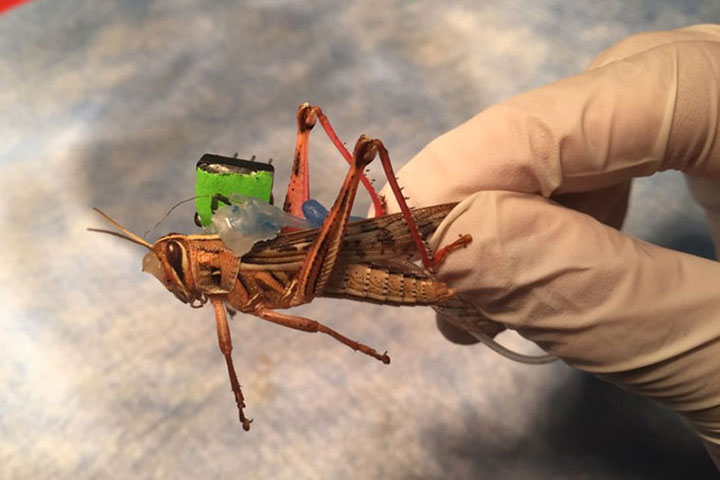It may sound like science fiction, but if university researchers are successful, the United States could one day be using bomb-sniffing locusts for homeland security.

READ MORE: How to prepare astronauts for Mars? NASA consults US Navy submarine force
The U.S. Navy has given Washington University in St. Louis a three-year grant of $750,000 to create cyborg-locusts capable of sniffing out volatile substances within its environment.
Locusts have an incredible sense of smell. The researchers at the university — who have been working with the Office of Naval Research on the technology — found that smells trigger identifiable neural activity within the brain of a locust, allowing it to distinguish a particular smell from others. Though the brains of locusts are considered relatively simple, the insects were able to distinguish a particular smell even while it was masked by other odours.
Capitalizing on this, the researchers equipped locusts with a small sensor that monitors their neural activity while they identify a particular smell.
READ MORE: Nano-machines—Scientists develop engine smaller than an ant
“Why re-invent the wheel? Why not take advantage of the biological solution?” Baranidharan Raman, associate professor of biomedical engineering in the School of Engineering and Applied Science at the university, said. “That is the philosophy here. Even the state-of-the-art miniaturized chemical sensing devices have a handful of sensors. On the other hand, if you look at the insect antenna, where their chemical sensors are located, there are several hundreds of thousands of sensors and of a variety of types.”
The researchers also plan to remotely control the locusts by placing a type of tattoo made of biocompatible silk which will then be applied to the wings. These tattoos will collect samples of “volatile organic compounds” which would then allow researchers to further analyze the compounds.
Raman told the BBC that he anticipates testing within a year, and, if successful, the locusts could be ready within two years.


Comments